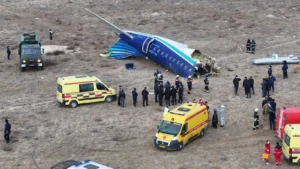
Introduction
Plane Crashes Air travel is often considered the safest mode of transportation, with millions of passengers taking to the skies daily. Yet, the phrase “plane crash” conjures up images of catastrophe, loss, and unanswered questions. This blog delves into the phenomenon of plane crashes, exploring their causes, history, notable cases, and how advancements in technology and safety protocols aim to prevent such tragedies.
A Brief History of Plane Crashes
The history of aviation is dotted with incidents that have reshaped the industry. From the earliest days of flight to modern aviation, each accident has contributed to the development of safer skies. Some key historical moments include:
- The Hindenburg Disaster (1937): While not a plane, this airship tragedy highlighted the dangers of hydrogen-fueled aircraft.
- Tenerife Airport Disaster (1977): A collision between two Boeing 747s on the runway remains the deadliest aviation accident, with 583 fatalities.
- The Concorde Crash (2000): This accident marked the beginning of the end for supersonic passenger travel.
Each of these incidents brought changes to regulations, technology, and pilot training to prevent similar occurrences in the future.
Common Causes of Plane Crashes
Understanding the causes of plane crashes is key to improving safety. Here are the primary factors contributing to these tragic events:
- Human Error:
- Pilot fatigue, miscommunication, and misjudgment are common.
- Example: The Tenerife Airport Disaster was caused by a miscommunication between pilots and air traffic control.
- Mechanical Failures:
- Engine malfunctions, structural failures, or faulty equipment can lead to accidents.
- Example: United Airlines Flight 232 suffered a catastrophic engine failure but highlighted the importance of teamwork in minimizing casualties.
- Weather Conditions:
- Turbulence, storms, and poor visibility can overwhelm even the most advanced systems.
- Example: Air France Flight 447 crashed into the Atlantic due to a combination of pilot error and weather conditions.
- Terrorism and Sabotage:
- Acts of terrorism, such as the events of 9/11, have reshaped airport security and aircraft design.
- Bird Strikes:
- Collisions with birds can damage engines and disrupt flight.
- Example: US Airways Flight 1549, famously known as the “Miracle on the Hudson,” was caused by a bird strike.
Notable Plane Crashes and Their Impact
Malaysia Airlines Flight MH370 (2014)
The disappearance of this flight remains one of aviation’s greatest mysteries. Despite extensive searches, the wreckage was never fully recovered, leading to various theories and speculation.
Air India Flight 182 (1985)
A midair bombing over the Atlantic Ocean killed 329 people, highlighting vulnerabilities in cargo and passenger security.
Ethiopian Airlines Flight 302 and Lion Air Flight 610 (2018-2019)
Both involved the Boeing 737 MAX, grounding the aircraft globally and leading to significant scrutiny of Boeing’s practices.
The Role of Technology in Preventing Plane Crashes
Modern aviation employs cutting-edge technology to minimize risks:
- Advanced Navigation Systems:
- GPS and real-time tracking ensure better route management and disaster response.
- Collision Avoidance Systems:
- TCAS (Traffic Collision Avoidance System) prevents midair collisions.
- Black Boxes and Data Recorders:
- Vital for understanding crash causes and improving safety measures.
- Automated Systems:
- Autopilot and AI-driven diagnostics reduce the margin for human error.
Psychological Impact on Survivors and Families
Plane crashes leave a lasting psychological toll on survivors and the families of victims. Grieving families often face years of unanswered questions, while survivors may experience PTSD, survivor’s guilt, and anxiety. Airlines and governments now prioritize mental health support in post-crash scenarios.
How to Overcome Fear of Flying
For many, the fear of flying stems from media coverage of crashes. Here are strategies to cope:
- Educate Yourself:
- Learn about the safety measures and statistical rarity of crashes.
- Seek Therapy:
- Cognitive-behavioral therapy (CBT) can help overcome phobias.
- Choose Comfortable Flights:
- Opt for direct flights and larger aircraft, which often feel safer.
- Practice Relaxation Techniques:
- Breathing exercises and meditation can ease anxiety.
The Future of Aviation Safety
The aviation industry continuously evolves to enhance safety. Emerging technologies like AI, machine learning, and blockchain for maintenance logs promise a safer future. Innovations like electric and hydrogen-powered planes may also redefine how we view air travel.
Conclusion
While plane crashes evoke fear and sadness, they also drive innovation and progress in aviation safety. By learning from past incidents, investing in technology, and prioritizing training, the aviation industry strives to ensure that air travel remains the safest mode of transportation. Understanding the rarity of crashes and the lessons learned from each event can help alleviate fears and foster trust in the skies.
